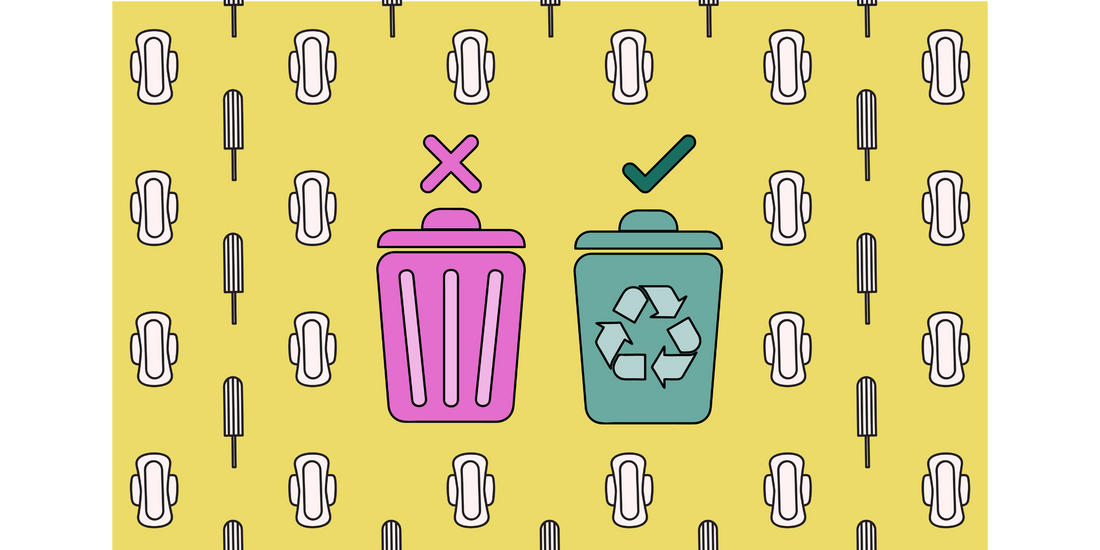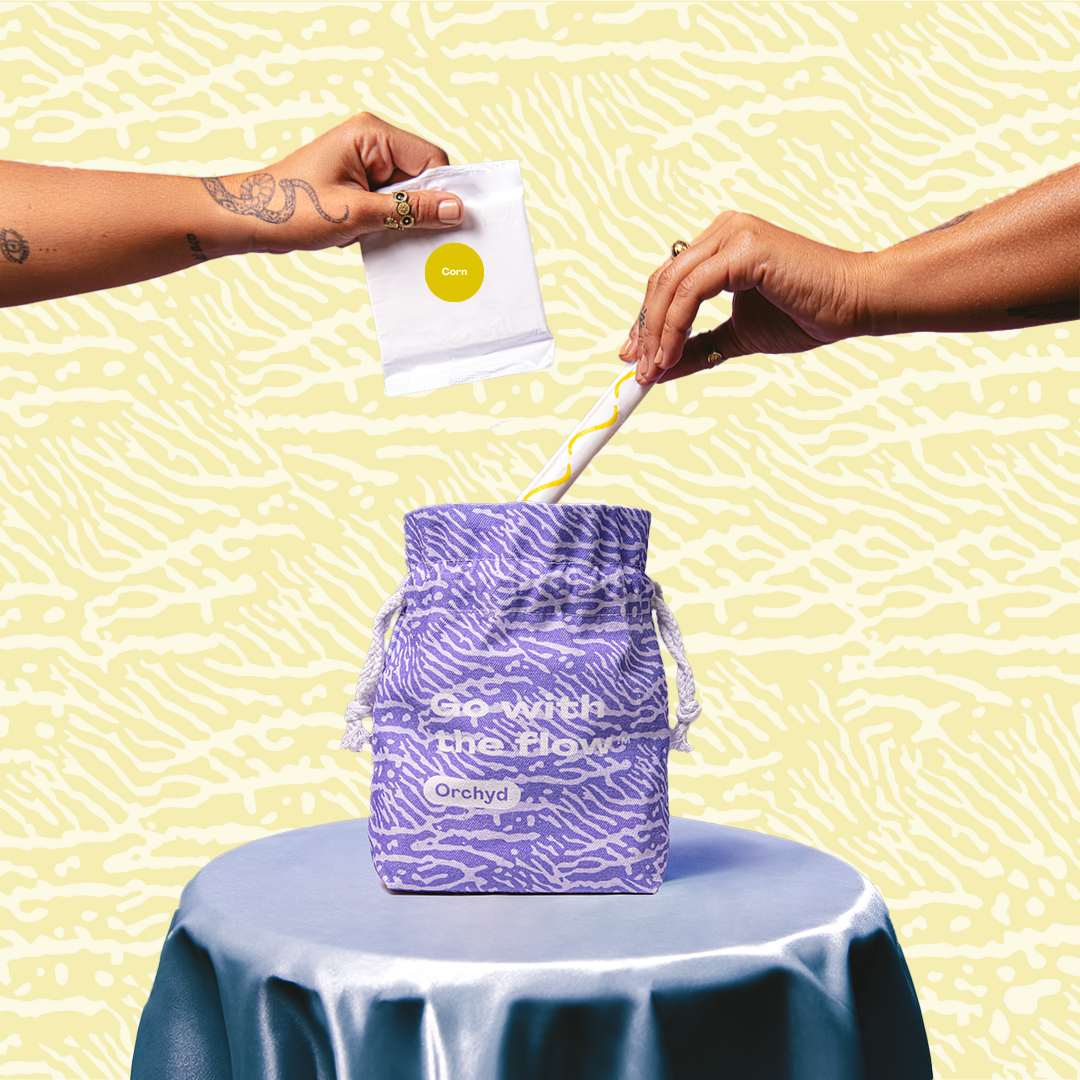
The History Behind Menstrual Product Waste
Share
It is the unfortunate truth that plastic is a dominant force in modern society, even though trends are changing toward sustainable products. Some habits--especially ones that we’ve grown up with--die hard, and most menstruating people still use disposable tampons and pads, even though they’re aware of more environmentally sustainable options. But of course, we should not blame the consumer for using the products most advertised and made readily available to them. Instead, we will focus on how plastic became so heavily incorporated into menstrual products, how that has impacted the environment, and how the consumer can pursue alternative menstrual products.
Waste Statistics
Did you know that in the US alone, about 12 billion pads and 7 billion tampons are thrown away yearly? That amounts to billions of pounds of waste in landfills and oceans, with the Marine Conservation Society reporting that 4.8 pieces of menstrual product are found per 100 meters of beach cleaned.
Even though the disposal of these products has a negative environmental impact, it is actually the processing of raw materials during their production is the most detrimental. For starters, the cotton needed for tampons requires an enormous amount of water to produce, and the plastics used in the pads and tampons are a low-density polyethylene formed through an energy-intensive process. The fossil fuels used to make these pads and tampons successfully create plastic-coated disposable products that will, wherever they end up, outlive their user.
History of Disposable Menstrual Products
Tampons were not invented until 1921 (or patented until 1933) and were made from Cellucotton, a hyper-absorbent plant-based product used for bandaging wounds during World War 1. Before then, menstruating people had to use whatever linen or excess fabric they could find to use as pads. But, noticing their absorption capabilities, nurses started using the Cellucotton material as pads; thus, menstrual products were born.
So where (and why) does the plastic come in? Despite the ability to directly insert a tampon with your hand, doctors and members of the public were initially put off by the idea of women coming into contact with their genitals during insertion. To satisfy the fragility of the public, inventors designed the plastic applicator we know so well today for women to insert the product “more demurely.” The original telescoping applicator was made of cardboard, though there were pitches to make it out of stainless steel and even glass. However, by the 1970s, the era of the thin, flexible plastic applicator was ushered in.
On the other hand, pads started incorporating plastic in the 1960s. Pad manufacturers began including a thin, flexible, leak-proof plastic as the base, or foundation, of the pad. From there, the discovery of adhesive plastics bred the design for pads sticking directly to the underwear. Before this, menstrual belts held pads in place: a suspender-like system worn under your underwear that would attach to the pad and hold it in place. So you can understand why sticky pads were a game changer. Their design only improved, adding the plastic adhesive “wings” that curl around the underwear and keep it totally secure during movement. Plastic became even more integral to the pad’s design, with scientists weaving polyester fibers through the cotton to wick moisture from the absorbent middle.
And as if the actual menstrual product (pads and tampons) weren’t wasteful enough, they are all individually wrapped in plastic. This is, again, because of the taboo and culture of shame around menstruation. So, the solution was to create discreet packaging that would allow for easy transportation of the product from desk to bathroom to trash can, without other people realizing you were going to take care of your period.
Alternatives
Never fear; alternative sustainable options are here! If you’ve decided to be part of the solution, hooray! Here are some menstrual products that are reusable and environmentally conscious:
Reusable Menstrual Cups
Reusable menstrual cups are the most sustainable menstrual product on the market. Whereas a menstruating person will use and discard over 9000 tampons in their life, one menstrual cup can last up to 30 years. Menstrual cups are bell-shaped receptacles inserted into the vaginal canal and collect blood. At the end of the day, the user simply removes it, rinses it with water, and puts it back in its container until the next use (if last use of the cycle, then the user would do a deep-clean in boiling water).
There are many different brands and options for reusable menstrual cups, so finding one that fits your price range and size is easy and accessible! Orchyd has three sizes and is made of 100% medical-grade silicone with no added dyes. The cup was designed to be soft and rigid enough so you find the right fit every time and never risk leaking. Menstrual cups also have the highest conversion rate over other reusable products. A survey had women use tampons and menstrual cups for the first time and found that, after trying them, 91% of the women would switch to permanently using menstrual cups for their periods.
Reusable pads
Reusable pads are an alternative to disposable pads and a good option for people who aren’t comfortable (or able to) insert something into their vaginal canal—costing between $12.00 to $15.00 and lasting up to five years. Simply buy a pack and throw them in the washing machine when done.
Reusable Period Underwear
A third option is using reusable period underwear that is designed for you to free bleed into. This thoughtful product wicks away blood and moisture without leaking through, so you can go product-less all day without worry. A pair usually runs for about $30, and most companies donate money or products to developing countries in need of menstrual care. This underwear typically lasts for two years.
For too long, the world has championed convenience over conscientiousness. The immense waste created by companies seeking capitalistic gain has tipped the balance of what our Earth can withstand and threatens the health and livelihood of all its inhabitants. Though we as consumers have been raised on the idea of disposable tampons and pads, the era we live in now allows us to make sustainable and proactive decisions with our money. If you want to help combat waste production, switching to alternative menstrual products is easy and affordable.

